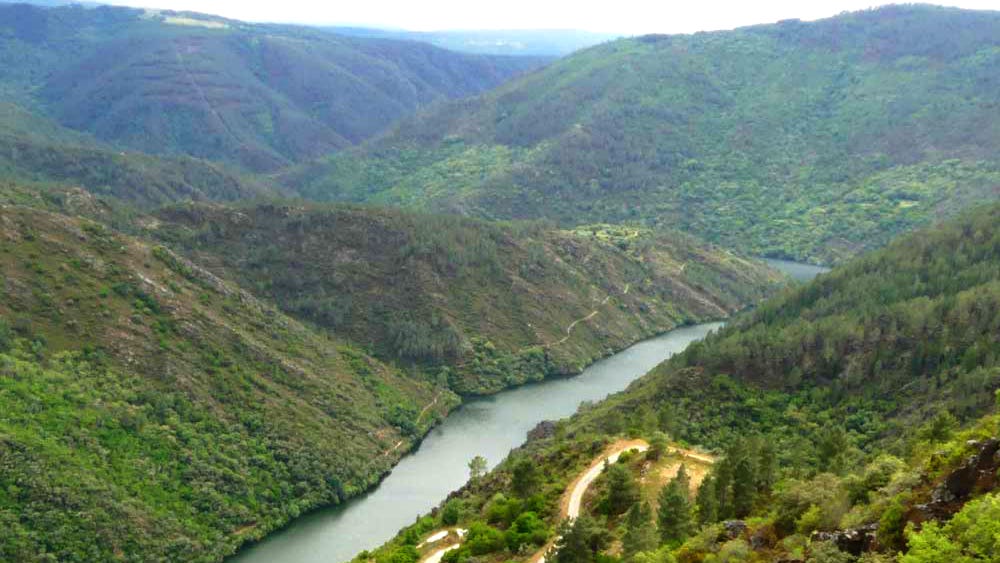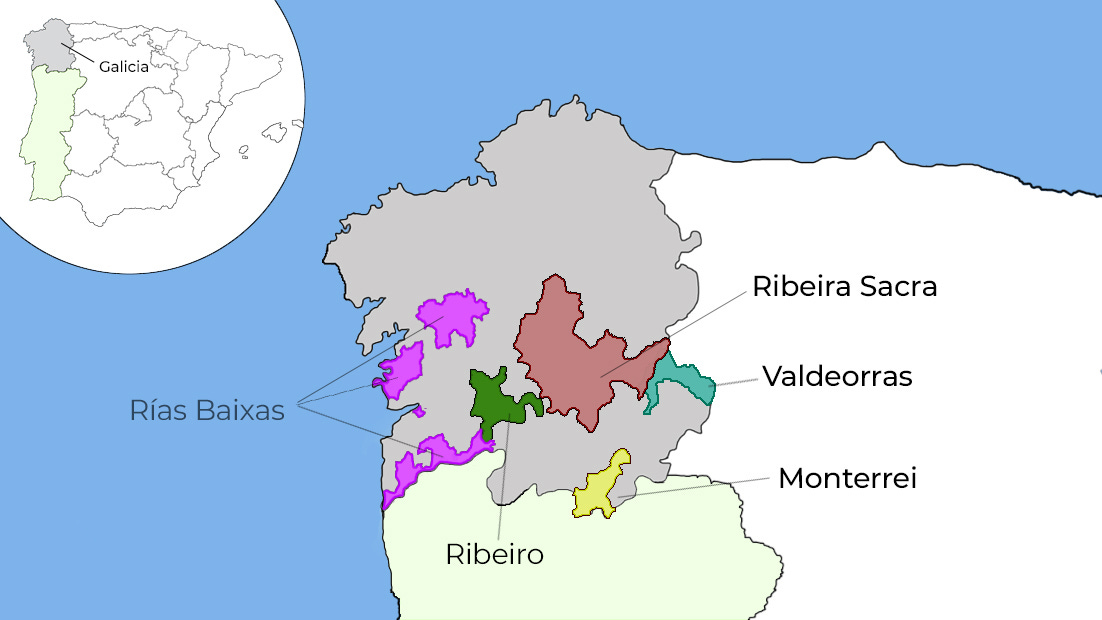DO Ribeiro
This article was originally published on our old website, Simply Spanish Wine.
Key Points
Grape varieties: principally white varieties like Treixadura, Torrontés, Godello, Albariño, Loureira, Lado and Caíño Blanco
Hectares planted: 1,293 Hectares
Grape growers: 1,667
Wineries: 98
About Ribeiro
Ribeiro, or "riverbank" in the Galician language, is the oldest of the five Denominaciones de Origen in Galicia. The first vines were planted at the time of the Romans and wine production really expanded with the settlement of the Benedictine religious order in the region in the 11th, 12th and 13th centuries. Then, as now, vineyards were grouped along the three valleys formed by the Miño, Avia and Arnoia rivers and healthy exports coupled with the wineries’ position on the pilgrims’ route to Santiago de Compostela ensured the fame of Ribeiro wines grew.
Overshadowed slightly by its more famous neighbour Rías Baixas, nevertheless, Ribeiro is well-known nowadays as a source of wonderful, blended white wines made from native local grapes like Treixadura, Torrontés, Godello or Loureira, and a growing collection of artisanal, small production red wines made with native grapes. There are just under 4,000 hectares of vines planted in the region, but over 5,000 registered growers so you can see that, as elsewhere in Galicia, vineyard plots are quite small. In terms of production, Ribeiro has about 115 registered wineries – known as adegas in the Galician language – who will grow some of their own grapes but also buy in grapes from the growers around them.
The terrain of Ribeiro
Ribeiro’s position on the banks of the three rivers makes for quite rolling terrain with steep river banks which can be difficult to farm. In landscapes such as these, winemakers often create terraces in their vineyards to make the land easier to farm, position their vines to make the most of the available sunlight and to facilitate access come harvest time. Soils in Ribeiro have quite a high granite content - sabrego is the local word used to describe the decomposed granite soils typically found in the area –often with a loamy, silty texture on the surface.
The climate of Ribeiro
People often describe Ribeiro as having a ¨transition¨ climate, by which they mean a climate halfway between the wet, moderate Atlantic climate of Rías Baixas 45km to the west and the continental climate of central Spain characterised by lower rainfall and wide temperature variation. The mountain chains to the west of the DO protect it from some of the wetter, squallier weather of the Atlantic coast, and ensure a greater range of temperatures which really helps the grapes to ripen slowly and steadily ensuring really aromatic fruit and lots of natural acidity and freshness.
The grapes of Ribeiro
Ribeiro is the home to a lot of Galicia’s native white grape varieties and a great place to continue your Spanish white wine education. Our favourite is probably Treixadura, a primary component in many of Ribeiro’s white blends, and a wonderfully aromatic grape with notes of stone fruit and white flowers and citrus. But also look out for Torrontés, which again gives fruit and flower aromas combined with a touch of hay or Godello which is more intense, honeyed and unctuous and used to add volume and smoothness to Ribeiro’s white blends.
What about the reds? Well, as in next door Rías Baixas, producers in Ribeiro are starting to bottle some of the region’s native red varieties like Caíño (which you’ll find of various types – eg Caíño Longo, Caíño Bravo or Caíño Tinto), Brancellao or Sousón. Production is still relatively small-scale and, like the whites, you’ll often find them blended together with other red varieties to give wines which, by Spanish standards, tend to be relatively low in alcohol and usually quite aromatic.
In summary
If you’ve started your Galician wine journey in Rías Baixas and are a fan of Albariño, Ribeiro is an obvious next stop. Comparisons are always tricky, but some recommend Ribeiro as a place for very approachable, enjoyable wines that might fit halfway between say a richer, riper Chardonnay and a fresher, zestier Sauvignon Blanc. Remember, vineyard plots are small and winery output is usually quite modest so the wines can cost a bit more than in other parts of Spain, but if you’re looking to expand your white wine cellar or explore beyond the Tempranillo-based reds of central Spain, this corner of Galicia is a must.







